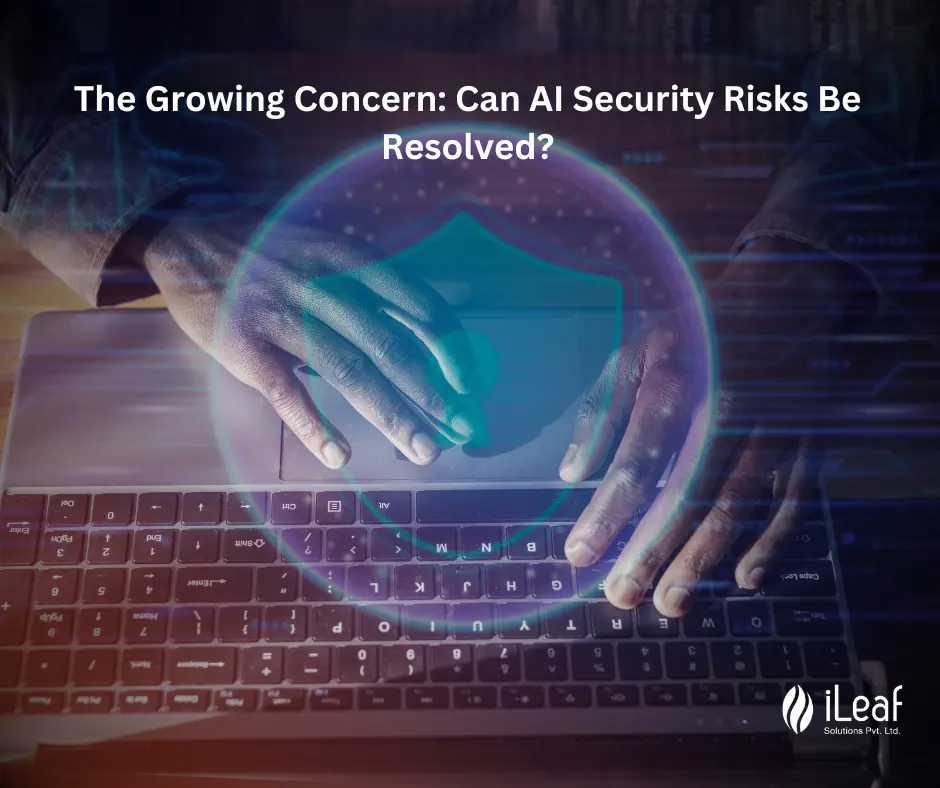Unveiling the Dark Side. Facing the Unresolved AI Security Risks

Table of Contents
- Understanding AI Security Risks
- Exploring the Challenges
- Current Measures to Address AI Security Risks
- Promising Solutions for the Future
- Ethical Considerations and the Human Factor
- Conclusion
In recent years, the rapid advancements in artificial intelligence (AI) technology have revolutionized various industries and transformed the way we live and work. From autonomous vehicles to voice assistants, AI has become an indispensable part of our daily lives. However, amidst the excitement and progress, there is a growing concern about the security risks associated with AI. Can these risks be effectively resolved? In this blog post, we will delve into this pressing issue and shed light on the steps being taken to tackle AI security risks.
Understanding AI Security Risks
Before we explore the potential solutions, it's crucial to understand the nature of AI security risks. AI security risks refer to vulnerabilities and threats that arise from the deployment and use of AI technology. These risks can manifest themselves in various ways, including malicious use of AI systems, data breaches, and biases within AI models.
The malicious use of AI technology is a significant concern in today's digital landscape. From deepfake videos to AI-powered attacks on computer systems, adversaries can harness AI capabilities to perpetrate cybercrimes or manipulate information.
Data privacy is another area of concern. As AI systems rely heavily on vast amounts of data, there is a risk of data breaches that could lead to identity theft or compromise sensitive information. Moreover, AI algorithms can inadvertently reflect biases present in the training data, resulting in discriminatory outcomes.
Exploring the Challenges
Resolving AI security risks is not without challenges. The complexity of AI systems makes them vulnerable to a wide range of attacks. These systems often incorporate intricate algorithms and large datasets, making it difficult to identify and mitigate potential vulnerabilities.
Additionally, there is a lack of comprehensive regulations and standards specifically addressing AI security. As AI technology evolves at a rapid pace, lawmakers and policymakers struggle to keep up with the emerging threats and develop appropriate frameworks for security.
Another challenge is the difficulty in proactively identifying and preventing AI attacks. Traditional security measures are often ill-equipped to detect AI-based threats, leaving organizations vulnerable to potential manipulations or breaches.
Current Measures to Address AI Security Risks
Despite the challenges, significant efforts are underway to address AI security risks. Researchers and developers are actively working on creating AI security solutions that can enhance the robustness and resilience of AI systems against potential attacks.
Image courtesy of venturebeat.com via Google Images
Moreover, collaboration between researchers, industry professionals, and policymakers has proven valuable in tackling AI security risks. Sharing knowledge and expertise helps in developing comprehensive strategies and best practices for securing AI technology.
Advancements in AI auditing and testing frameworks have also played a crucial role. Auditing protocols enable organizations to assess and verify the security posture of their AI systems, while testing frameworks help identify vulnerabilities and weaknesses before deployment.
Furthermore, the role of legislation and policy-making cannot be underestimated. Governments around the world are recognizing the need for regulatory frameworks that balance innovation and security. Implementing comprehensive AI security policies can ensure responsible development and deployment of AI technology.
Promising Solutions for the Future.
Looking ahead, there are several promising solutions that can help resolve AI security risks. Enhanced AI model training and testing methodologies can significantly improve the quality and security of AI systems. By integrating rigorous testing and comprehensive model validation protocols, developers can reduce the chances of AI vulnerabilities.
Another key aspect is the continuous monitoring and threat detection of AI systems. Implementing robust monitoring mechanisms can help identify and address potential cyber threats, ensuring the security of AI applications and platforms.
Transparency and explainability in AI algorithms are crucial for building trust and mitigating security risks. By introducing techniques that make AI algorithms more interpretable, organizations can detect biases, errors, or malicious intent in the decision-making processes of AI systems.
Ethical considerations are vital in the development and deployment of AI technology. Integrating ethical frameworks and standards into AI systems can help address the potential negative consequences of AI, such as the impact on human autonomy and the perpetuation of biases and discrimination.
Ethical Considerations and the Human Factor
As we navigate the path towards resolving AI security risks, we must acknowledge the importance of the human factor. Ensuring responsible and ethical use of AI technology requires not only technical advancements but also considerations of the broader societal implications. One primary ethical concern is the potential impact on human autonomy and decision-making. As AI becomes more sophisticated, there is a need to strike a balance between automation and human control to prevent undue influence or loss of human agency.
Bias and discrimination within AI systems also raise ethical and social implications. As AI algorithms learn from vast amounts of historical data, they have the potential to perpetuate biases and discrimination present in society. It is crucial to address and mitigate these biases to ensure fair and equitable outcomes.
At the forefront of AI development, it is essential to prioritize responsible innovation. Organizations and developers have a responsibility to consider the ethical implications of their creations, actively working towards building AI technology that benefits humanity at large.
Conclusion
The growing concern surrounding AI security risks cannot be ignored. Through ongoing research, collaboration, and the implementation of technological advancements, AI security risks can be effectively addressed. By understanding these risks, exploring the challenges, and implementing current measures, we are taking significant steps towards resolving AI security risks. Promising solutions, such as enhanced training methodologies, robust monitoring, and improved transparency, pave the way for a more secure and ethical AI environment. Ultimately, it is our collective responsibility as individuals, organizations, and policymakers to prioritize the security and ethical considerations alongside the adoption and progress of AI. By doing so, we can ensure that AI technology continues to empower and benefit society without compromising on privacy, fairness, and security.














